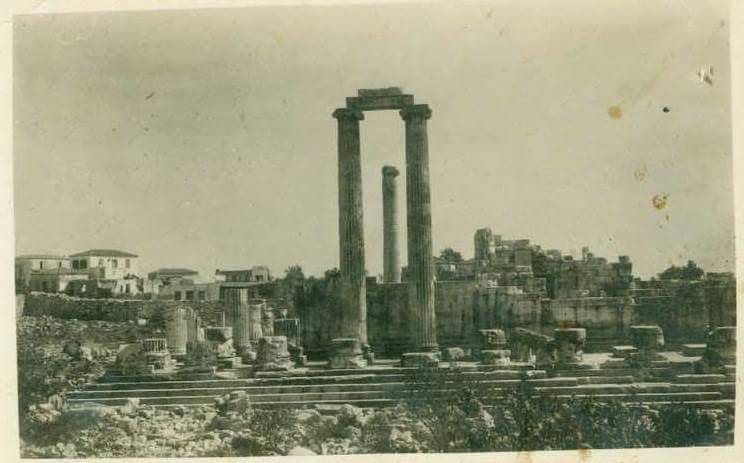By Glenn Maffia
And so it begins. When friends from many a foreign shore start to descend into this timeless ancient Ionian landscape. Full with wonderment and, contrary to the sun-seeking hordes, a thirst for what remains of our shared historic past. Though we have been known to quench the dusty dryness with a cold beer or two in the torrid heat.
A return to the Temple
Such visits have refocused my attention back to the Temple of Apollo. I have been spreading my wings a little further afield of late for subject matter to feed my writings as no further local archaeological information has been forthcoming from any sources, most especially irritatingly from the German Archaeological Institute (GAI).
Though my contacts within Europe are indicating that this summer shall probably not be punctuated by the activities of the GAI, within Didyma at least.
It transpires that all the members of the Didyma project departed the University of Halle at the conclusion of 2021, including one very senior member. Therefore, at present, that leaves Prof. Helga Bumke, the Director of Excavations, and her assistant, Ms. Aylin, as being the sole personnel ‘in situ’. Without a full team it is sorely apparent that is not going to be compliant with a dig of any substance.

A briefing role?
Covid lockdowns have confused my biological clock somewhat, but I am sure that it was last July that I was informed that a Türk team of archaeologists would be undertaking full excavation responsibilities.
That seemed to have not taken place, at least in the public domain. Certainly a GAI team performed some crucial maintenance work upon the three standing columns, but to my knowledge (and I did look) no investigative archaeology. Were the Türk team being briefed, brought up to speed, behind the scenes by the GAI Director of Excavations?
Without a team would Prof. Bumke and her assistant Ms. Aylin perform a similar role again this year? Ms. Aylin, being a German-Türk, would be ideally suited in such a scenario to ensure no language misunderstandings occur. Though Prof. Bumke’s experience, depth of knowledge and her pure longevity of working here in Didyma would remain paramount.
She is quite a brilliant and innovative archaeologist. I’m afraid that Prof. Bumke is just an awful communicator in the public sphere. This extends to no written material being produced for the public domain. Hence, no guidebook upon the Temple and its environment in the bookshop next to the ticket kiosk.
Consequences of a ‘local’ take-over
My reticence of the eventuality occurring of an indigenous replacement team is based upon the Türk archaeologists’ disposition to gravitate towards some ‘theme park’ pastiche of a ‘reconstruction’. See my previous article on the disheartening restoration of the Zeus Temple at Euromos.
Botched restoration projects have become an ingrained fear of mine after evidencing similar grotesques sprouting from once mystical atmospheres where, with the appropriate levels of imagination, one can float with the ghosts of the past.
The earth-shaken tumbled stones are testimony to a distinguished feature of their inanimate graven gravity. This is where ideas coalesce and form before gushing forth to the surface in the pure essence of cognitive perception.
If it is proposed that a similar commercial and corrosive fate should ever be sanctioned for Didyma’s Temple of Apollo, then close the curtains, turn off the lights and fearfully await the looming nightmare.
This majestic Temple was sacrosanct in its heyday, drawing in vast revenues from the great and the powerful, until the vindictive exception of the Persians whom sacked and raised the Archaic temple to the ground after the Ionian revolt in 494 BCE.
From that deflowering an even more exquisite bloom sprouted, the one we observe today. That is until the even more vindictive Christians drew the final gasps of the polytheist religion with the edict of Theodosius I (347-395).
Should the GAI fully depart, after more than a century of exemplary toil and success on this unique site, I would implore the incumbent ‘Ministry of culture and TOURISM’ (emphasis intended) not to defile this iconic structure to the avarice of fleeting commercialism.
Tides turn, winds change, though history is literally depicted in invaluable stone as a physical document to our collective past, with pertinent messages to our present and future.
